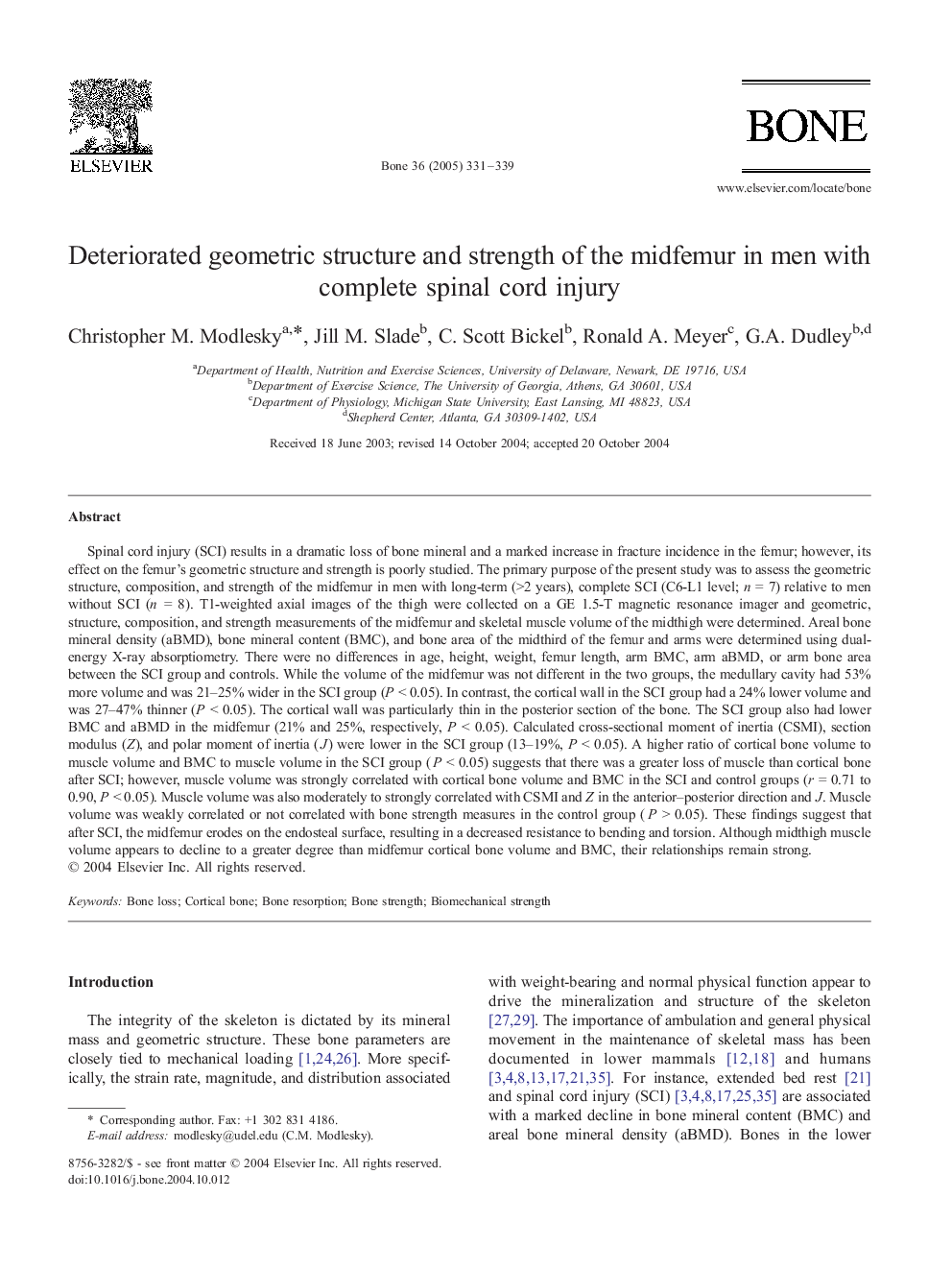| Article ID | Journal | Published Year | Pages | File Type |
|---|---|---|---|---|
| 9105149 | Bone | 2005 | 9 Pages |
Abstract
Spinal cord injury (SCI) results in a dramatic loss of bone mineral and a marked increase in fracture incidence in the femur; however, its effect on the femur's geometric structure and strength is poorly studied. The primary purpose of the present study was to assess the geometric structure, composition, and strength of the midfemur in men with long-term (>2 years), complete SCI (C6-L1 level; n = 7) relative to men without SCI (n = 8). T1-weighted axial images of the thigh were collected on a GE 1.5-T magnetic resonance imager and geometric, structure, composition, and strength measurements of the midfemur and skeletal muscle volume of the midthigh were determined. Areal bone mineral density (aBMD), bone mineral content (BMC), and bone area of the midthird of the femur and arms were determined using dual-energy X-ray absorptiometry. There were no differences in age, height, weight, femur length, arm BMC, arm aBMD, or arm bone area between the SCI group and controls. While the volume of the midfemur was not different in the two groups, the medullary cavity had 53% more volume and was 21-25% wider in the SCI group (P < 0.05). In contrast, the cortical wall in the SCI group had a 24% lower volume and was 27-47% thinner (P < 0.05). The cortical wall was particularly thin in the posterior section of the bone. The SCI group also had lower BMC and aBMD in the midfemur (21% and 25%, respectively, P < 0.05). Calculated cross-sectional moment of inertia (CSMI), section modulus (Z), and polar moment of inertia (J) were lower in the SCI group (13-19%, P < 0.05). A higher ratio of cortical bone volume to muscle volume and BMC to muscle volume in the SCI group (P < 0.05) suggests that there was a greater loss of muscle than cortical bone after SCI; however, muscle volume was strongly correlated with cortical bone volume and BMC in the SCI and control groups (r = 0.71 to 0.90, P < 0.05). Muscle volume was also moderately to strongly correlated with CSMI and Z in the anterior-posterior direction and J. Muscle volume was weakly correlated or not correlated with bone strength measures in the control group (P > 0.05). These findings suggest that after SCI, the midfemur erodes on the endosteal surface, resulting in a decreased resistance to bending and torsion. Although midthigh muscle volume appears to decline to a greater degree than midfemur cortical bone volume and BMC, their relationships remain strong.
Related Topics
Life Sciences
Biochemistry, Genetics and Molecular Biology
Developmental Biology
Authors
Christopher M. Modlesky, Jill M. Slade, C. Scott Bickel, Ronald A. Meyer, G.A. Dudley,
